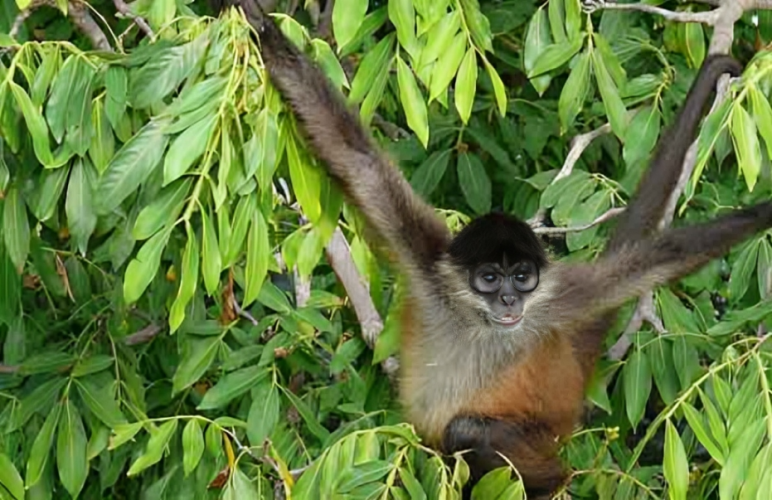
Monkeys first appeared in South America approximately 37 million years ago. Having landed in the Amazon, they gradually settled north to the Caribbean and south to Patagonia, says Richard Kay, a professor of evolutionary anthropology at Duke University in America.
By the time monkeys first appeared on South American soil, this continent was inhabited by a peculiar fauna of 10-meter snakes, giant armadillos and strange ungulates. However, over time, the monkeys were able to find ecological niches for themselves in this unusual environment, and significantly expand their range. Today, the New World is home to more than 150 species of primates, from the pygmy marmoset, which weighs little more than a bar of soap, to the 10-kilogram arachnid myra.
"Molecular studies show that the closest relatives of New World monkeys live in Africa and Asia. But they cannot explain how these animals got here," Kay said. To answer his question, the professor had to use data from geology, paleoclimatology and paleontology to ultimately develop several patterns of evolution and migration of primates in the Americas.
It must be recalled that South America separated from Africa long before the appearance of monkeys. The lack of fossils of this group of organisms in North America makes the possibility of migration from the north extremely doubtful. Rather, the monkeys sailed to South America from Africa on “rafts” of fallen trees and other vegetation, carried away by strong storms. It is also likely that the islands that have now sunk to the bottom of the Atlantic served as a kind of bridge between the continents.
According to Kay, there is a gap of 11 million years between the first appearance of apes in South America and the first fossil found. The professor called this period of time “ghostly,” explaining that all this time the monkeys were hiding in the Amazon basin, whose dense rain forests make it difficult to both discover new species and discover the locations of fossils.
“However, they got to South America and successfully developed in the Amazon basin. From time to time they even managed to get out of there,” Kay said. “But if you want to know what was happening in the Amazon then, you need to study its periphery.” Today, scientists can easily do this in Chile and Patagonia. "We know that the Amazon has been warm and wet for a very long time, and over time this climate zone has expanded and contracted like the bellows of an accordion," the professor said.
For millions of years, the Amazon basin has functioned as a reservoir of primate biodiversity. When climate and sea level allowed, monkeys attempted to spread to other regions of South America. Geological conditions there turned out to be more favorable for the preservation of fossils, and Kay received a lot of material for his research. Modern techniques for studying DNA also provided him with great help.
The professor called molecular data the “gold standard,” but due to the impossibility of obtaining analytically suitable materials for a number of ancient species, classical fossils were also of great importance in his work. “It’s often the only tool available to us,” Kay admitted. “And it does the job well.”
In total, the scientist studied 16 modern and 20 fossil species of primates from South America and Africa. Having identified 399 functions of teeth, skulls and skeletons, he built a common family tree for them. The second tree was constructed based on DNA analysis data. With the exception of a few isolated cases, the two trees agreed remarkably well with each other.
Along the way, Kay brought clarity to the question of why speciation outside the Amazon invariably ended in evolutionary dead ends, writes Science Daily. “When the climate in Patagonia became cool and dry, the primates there simply died out without leaving any descendants,” he explained. “The same thing has happened for the last 6,000 years in the Caribbean islands, where the monkeys disappeared as a result of the arrival of humans and rising sea levels.” At the same time, the monkeys of the Caribbean, according to Kay, come from South, not Central, America.
Article Biogeography in deep time – What do phylogenetics, geology, and paleoclimate tell us about early platyrrhine evolution? available on the ScienceDirect portal
